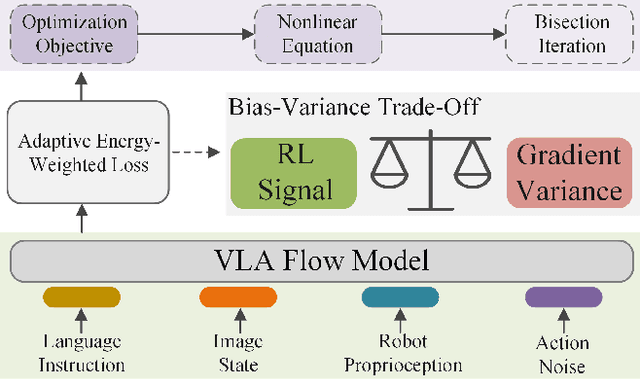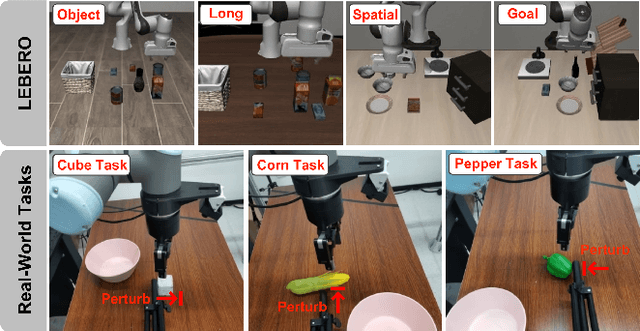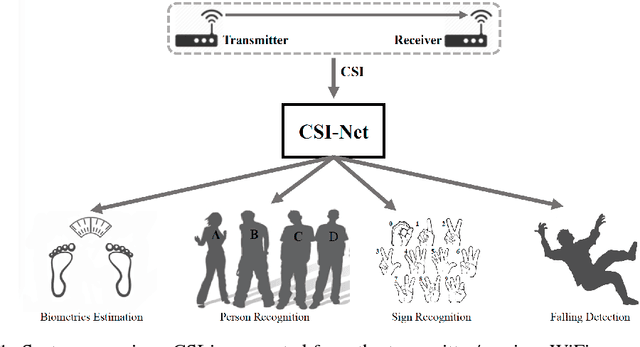Shiyuan Zhang
Exploring Training Data Attribution under Limited Access Constraints
Sep 16, 2025Abstract:Training data attribution (TDA) plays a critical role in understanding the influence of individual training data points on model predictions. Gradient-based TDA methods, popularized by \textit{influence function} for their superior performance, have been widely applied in data selection, data cleaning, data economics, and fact tracing. However, in real-world scenarios where commercial models are not publicly accessible and computational resources are limited, existing TDA methods are often constrained by their reliance on full model access and high computational costs. This poses significant challenges to the broader adoption of TDA in practical applications. In this work, we present a systematic study of TDA methods under various access and resource constraints. We investigate the feasibility of performing TDA under varying levels of access constraints by leveraging appropriately designed solutions such as proxy models. Besides, we demonstrate that attribution scores obtained from models without prior training on the target dataset remain informative across a range of tasks, which is useful for scenarios where computational resources are limited. Our findings provide practical guidance for deploying TDA in real-world environments, aiming to improve feasibility and efficiency under limited access.
Balancing Signal and Variance: Adaptive Offline RL Post-Training for VLA Flow Models
Sep 04, 2025



Abstract:Vision-Language-Action (VLA) models based on flow matching have shown excellent performance in general-purpose robotic manipulation tasks. However, the action accuracy of these models on complex downstream tasks is unsatisfactory. One important reason is that these models rely solely on the post-training paradigm of imitation learning, which makes it difficult to have a deeper understanding of the distribution properties of data quality, which is exactly what Reinforcement Learning (RL) excels at. In this paper, we theoretically propose an offline RL post-training objective for VLA flow models and induce an efficient and feasible offline RL fine-tuning algorithm -- Adaptive Reinforced Flow Matching (ARFM). By introducing an adaptively adjusted scaling factor in the VLA flow model loss, we construct a principled bias-variance trade-off objective function to optimally control the impact of RL signal on flow loss. ARFM adaptively balances RL advantage preservation and flow loss gradient variance control, resulting in a more stable and efficient fine-tuning process. Extensive simulation and real-world experimental results show that ARFM exhibits excellent generalization, robustness, few-shot learning, and continuous learning performance.
LSDM: LLM-Enhanced Spatio-temporal Diffusion Model for Service-Level Mobile Traffic Prediction
Jul 23, 2025



Abstract:Service-level mobile traffic prediction for individual users is essential for network efficiency and quality of service enhancement. However, current prediction methods are limited in their adaptability across different urban environments and produce inaccurate results due to the high uncertainty in personal traffic patterns, the lack of detailed environmental context, and the complex dependencies among different network services. These challenges demand advanced modeling techniques that can capture dynamic traffic distributions and rich environmental features. Inspired by the recent success of diffusion models in distribution modeling and Large Language Models (LLMs) in contextual understanding, we propose an LLM-Enhanced Spatio-temporal Diffusion Model (LSDM). LSDM integrates the generative power of diffusion models with the adaptive learning capabilities of transformers, augmented by the ability to capture multimodal environmental information for modeling service-level patterns and dynamics. Extensive evaluations on real-world service-level datasets demonstrate that the model excels in traffic usage predictions, showing outstanding generalization and adaptability. After incorporating contextual information via LLM, the performance improves by at least 2.83% in terms of the coefficient of determination. Compared to models of a similar type, such as CSDI, the root mean squared error can be reduced by at least 8.29%. The code and dataset will be available at: https://github.com/SoftYuaneR/LSDM.
Taming Hyperparameter Sensitivity in Data Attribution: Practical Selection Without Costly Retraining
May 30, 2025Abstract:Data attribution methods, which quantify the influence of individual training data points on a machine learning model, have gained increasing popularity in data-centric applications in modern AI. Despite a recent surge of new methods developed in this space, the impact of hyperparameter tuning in these methods remains under-explored. In this work, we present the first large-scale empirical study to understand the hyperparameter sensitivity of common data attribution methods. Our results show that most methods are indeed sensitive to certain key hyperparameters. However, unlike typical machine learning algorithms -- whose hyperparameters can be tuned using computationally-cheap validation metrics -- evaluating data attribution performance often requires retraining models on subsets of training data, making such metrics prohibitively costly for hyperparameter tuning. This poses a critical open challenge for the practical application of data attribution methods. To address this challenge, we advocate for better theoretical understandings of hyperparameter behavior to inform efficient tuning strategies. As a case study, we provide a theoretical analysis of the regularization term that is critical in many variants of influence function methods. Building on this analysis, we propose a lightweight procedure for selecting the regularization value without model retraining, and validate its effectiveness across a range of standard data attribution benchmarks. Overall, our study identifies a fundamental yet overlooked challenge in the practical application of data attribution, and highlights the importance of careful discussion on hyperparameter selection in future method development.
TimeCausality: Evaluating the Causal Ability in Time Dimension for Vision Language Models
May 21, 2025Abstract:Reasoning about temporal causality, particularly irreversible transformations of objects governed by real-world knowledge (e.g., fruit decay and human aging), is a fundamental aspect of human visual understanding. Unlike temporal perception based on simple event sequences, this form of reasoning requires a deeper comprehension of how object states change over time. Although the current powerful Vision-Language Models (VLMs) have demonstrated impressive performance on a wide range of downstream tasks, their capacity to reason about temporal causality remains underexplored. To address this gap, we introduce \textbf{TimeCausality}, a novel benchmark specifically designed to evaluate the causal reasoning ability of VLMs in the temporal dimension. Based on our TimeCausality, we find that while the current SOTA open-source VLMs have achieved performance levels comparable to closed-source models like GPT-4o on various standard visual question answering tasks, they fall significantly behind on our benchmark compared with their closed-source competitors. Furthermore, even GPT-4o exhibits a marked drop in performance on TimeCausality compared to its results on other tasks. These findings underscore the critical need to incorporate temporal causality into the evaluation and development of VLMs, and they highlight an important challenge for the open-source VLM community moving forward. Code and Data are available at \href{https://github.com/Zeqing-Wang/TimeCausality }{TimeCausality}.
Energy-Weighted Flow Matching for Offline Reinforcement Learning
Mar 06, 2025Abstract:This paper investigates energy guidance in generative modeling, where the target distribution is defined as $q(\mathbf x) \propto p(\mathbf x)\exp(-\beta \mathcal E(\mathbf x))$, with $p(\mathbf x)$ being the data distribution and $\mathcal E(\mathcal x)$ as the energy function. To comply with energy guidance, existing methods often require auxiliary procedures to learn intermediate guidance during the diffusion process. To overcome this limitation, we explore energy-guided flow matching, a generalized form of the diffusion process. We introduce energy-weighted flow matching (EFM), a method that directly learns the energy-guided flow without the need for auxiliary models. Theoretical analysis shows that energy-weighted flow matching accurately captures the guided flow. Additionally, we extend this methodology to energy-weighted diffusion models and apply it to offline reinforcement learning (RL) by proposing the Q-weighted Iterative Policy Optimization (QIPO). Empirically, we demonstrate that the proposed QIPO algorithm improves performance in offline RL tasks. Notably, our algorithm is the first energy-guided diffusion model that operates independently of auxiliary models and the first exact energy-guided flow matching model in the literature.
FoMo: A Foundation Model for Mobile Traffic Forecasting with Diffusion Model
Oct 20, 2024Abstract:Mobile traffic forecasting allows operators to anticipate network dynamics and performance in advance, offering substantial potential for enhancing service quality and improving user experience. However, existing models are often task-oriented and are trained with tailored data, which limits their effectiveness in diverse mobile network tasks of Base Station (BS) deployment, resource allocation, energy optimization, etc. and hinders generalization across different urban environments. Foundation models have made remarkable strides across various domains of NLP and CV due to their multi-tasking adaption and zero/few-shot learning capabilities. In this paper, we propose an innovative Foundation model for Mo}bile traffic forecasting (FoMo), aiming to handle diverse forecasting tasks of short/long-term predictions and distribution generation across multiple cities to support network planning and optimization. FoMo combines diffusion models and transformers, where various spatio-temporal masks are proposed to enable FoMo to learn intrinsic features of different tasks, and a contrastive learning strategy is developed to capture the correlations between mobile traffic and urban contexts, thereby improving its transfer learning capability. Extensive experiments on 9 real-world datasets demonstrate that FoMo outperforms current models concerning diverse forecasting tasks and zero/few-shot learning, showcasing a strong universality. We further deploy the FoMo on the JiuTian optimization platform of China Mobile, where we use the predicted mobile data to formulate network planning and optimization applications, including BS deployment, resource block scheduling, and BS sleep control.
$\texttt{dattri}$: A Library for Efficient Data Attribution
Oct 06, 2024



Abstract:Data attribution methods aim to quantify the influence of individual training samples on the prediction of artificial intelligence (AI) models. As training data plays an increasingly crucial role in the modern development of large-scale AI models, data attribution has found broad applications in improving AI performance and safety. However, despite a surge of new data attribution methods being developed recently, there lacks a comprehensive library that facilitates the development, benchmarking, and deployment of different data attribution methods. In this work, we introduce $\texttt{dattri}$, an open-source data attribution library that addresses the above needs. Specifically, $\texttt{dattri}$ highlights three novel design features. Firstly, $\texttt{dattri}$ proposes a unified and easy-to-use API, allowing users to integrate different data attribution methods into their PyTorch-based machine learning pipeline with a few lines of code changed. Secondly, $\texttt{dattri}$ modularizes low-level utility functions that are commonly used in data attribution methods, such as Hessian-vector product, inverse-Hessian-vector product or random projection, making it easier for researchers to develop new data attribution methods. Thirdly, $\texttt{dattri}$ provides a comprehensive benchmark framework with pre-trained models and ground truth annotations for a variety of benchmark settings, including generative AI settings. We have implemented a variety of state-of-the-art efficient data attribution methods that can be applied to large-scale neural network models, and will continuously update the library in the future. Using the developed $\texttt{dattri}$ library, we are able to perform a comprehensive and fair benchmark analysis across a wide range of data attribution methods. The source code of $\texttt{dattri}$ is available at https://github.com/TRAIS-Lab/dattri.
CSI-Net: Unified Human Body Characterization and Action Recognition
Oct 07, 2018



Abstract:Channel State Information (CSI) of WiFi signals becomes increasingly attractive in human sensing applications due to the pervasiveness of WiFi, robustness to illumination and view points, and little privacy concern comparing to cameras. In majority of existing works, CSI sequences are analyzed by traditional signal processing approaches. These approaches rely on strictly imposed assumption on propagation paths, reflection and attenuation of signal interacting with human bodies and indoor background. This makes existing approaches very difficult to model the delicate body characteristics and activities in the real applications. To address these issues, we build CSI-Net, a unified Deep Neural Network (DNN), that fully utilizes the strength of deep feature representation and the power of existing DNN architectures for CSI-based human sensing problems. Using CSI-Net, we jointly solved two body characterization problems: biometrics estimation (including body fat, muscle, water and bone rates) and human identification. We also demonstrated the application of CSI-Net on two distinctive action recognition tasks: the hand sign recognition (fine-scaled action of the hand) and falling detection (coarse-scaled motion of the body). Besides the technical contribution of CSI-Net, we present major discoveries and insights on how the multi-frequency CSI signals are encoded and processed in DNNs, which, to the best of our knowledge, is the first attempt that bridges the WiFi sensing and deep learning in human sensing problems.
 Add to Chrome
Add to Chrome Add to Firefox
Add to Firefox Add to Edge
Add to Edge